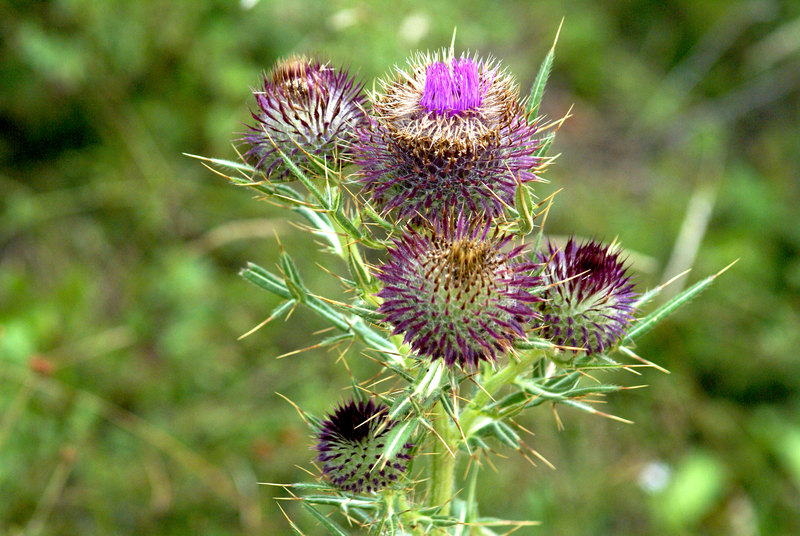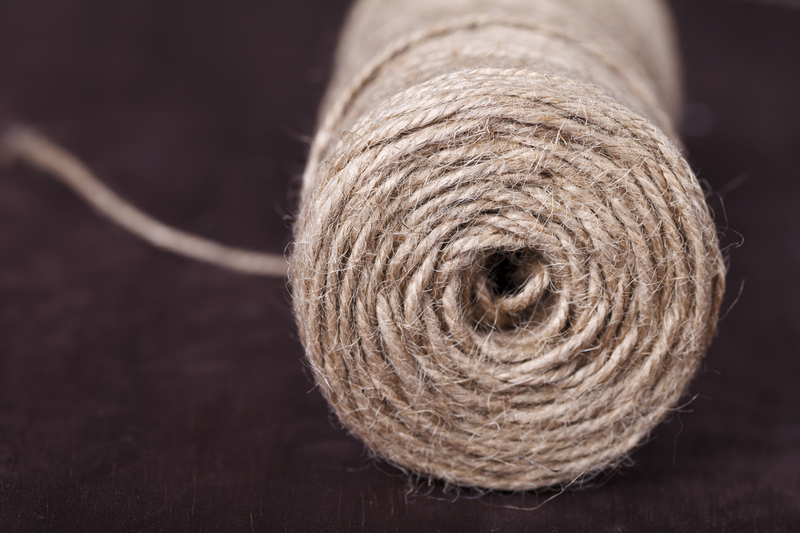Elevate Your Garden with Hedge Sculptures
Posted on 20/08/2025
Elevate Your Garden with Hedge Sculptures: Transforming Green Spaces into Living Art
Imagine entering a garden where leafy animals roam, spirals rise from the earth, and abstract art takes shape in glorious shades of green. Hedge sculptures aren't just landscaping--they're masterpieces crafted from living plants. In this article, we delve into how you can elevate your garden with hedge sculptures, explore the art and science behind topiary, offer practical guidance, and inspire your creativity to turn simple hedges into mesmerizing focal points. Unexpectedly rewarding, hedge sculpting invites you to blur the line between nature and design, making your personal outdoor space as expressive as any gallery!
What Are Hedge Sculptures? Understanding Living Art
Hedge sculptures, also known as topiary art, involve the careful clipping and training of shrubs and trees into clearly defined shapes. These range from geometric forms to complex, imaginative figures such as animals, people, and even mythical creatures. The practice dates back centuries--from the gardens of ancient Rome to the grand estates of 17th-century France and England.
Why Choose Hedge Sculptures for Your Garden?
- Visual Impact: A hedge sculpture creates a stunning focal point and conversation starter.
- Personal Expression: Sculpted shrubs can reflect your personality, interests or commemorate special moments.
- Natural Privacy: They offer beauty and function by serving as green privacy screens or living borders.
- Wildlife Habitats: Certain hedge types shelter birds and pollinators, supporting biodiversity.
- Seasonal Interest: Well-chosen species provide color, shape, and even flowers year-round.
Adding garden hedge sculptures introduces intrigue and vitality, instantly elevating your outdoor living area from ordinary to extraordinary.

Getting Started: Choosing the Right Plants for Your Topiary
The foundation of sculpted hedges is the selection of plants that respond well to trimming, train into specific forms, and offer year-round beauty. Here's what to look for in topiary plants:
- Evergreen foliage for year-round appeal
- Dense leaf structure for clean, defined lines
- Resilience to repeated pruning and shaping
- Adaptability to your local climate
Popular Plants for Hedge Sculptures
- Boxwood (Buxus sempervirens): A classic choice, known for its dense, slow-growing, easily shaped leaves.
- Privet (Ligustrum): Fast-growing and tolerant of hard pruning, ideal for larger or more complex shapes.
- Yew (Taxus baccata): Valued for deep green needles and exceptional longevity.
- Holly (Ilex): Shiny leaves and red berries add ornamental value, though they require careful handling.
- Lonicera nitida (Box Honeysuckle): Fine, dense foliage makes it perfect for intricate designs.
Tip: If you're just starting, try smaller shapes and robust, forgiving species like boxwood. As your confidence grows, venture into more elaborate designs and varied plants.
Topiary Styles: Shapes, Themes, and Creative Inspirations
There are virtually endless possibilities when sculpting hedges to enhance your garden.
Traditional Geometric Forms
- Globes and Spheres
- Cubes and Rectangles
- Pyramids and Cones
- Spirals and Obelisks
These classic shapes introduce symmetry, order, and structure, which are perfectly suited to formal gardens or as grounding points in wilder landscapes.
Figurative and Whimsical Designs
- Animals--from rabbits to peacocks and dragons
- People or Silhouettes
- Abstract forms and waves
- Arches, garden seats, or living sculptures
Opt for these if you want to elevate your garden with topiary art that infuses fun, personality, and fantasy into your outdoor space.
Themed Gardens
- Fairy tale gardens with animal friends and storybook figures
- Modern landscapes showcasing minimalistic cubes, spirals, or flowing organic waves
- Historic or formal gardens with elaborate knotwork hedges and green mazes
The Art and Technique of Creating Hedge Sculptures
Ready to start your first hedge sculpture? Here's what you need to know:
Tools for Topiary Success
- Shears and Pruners: Invest in sharp, high-quality tools for clean cuts and easy shaping.
- Topiary Frames: Wire frames serve as guides for more complex shapes and beginners.
- String and Stakes: Mark out geometric or elaborate lines for precision trimming.
- Garden Gloves: Essential, especially when working with prickly or sappy plants.
Maintenance tip: Clean your tools often to prevent disease spread and ensure smooth cuts.
Step-by-Step: How to Start a Simple Hedge Sculpture
- Choose a Healthy Shrub or Young Plant: Young, vigorous plants adapt more quickly to training.
- Visualize or Frame Your Shape: Use a wire frame or sketch the shape you desire.
- Begin Pruning: Remove unwanted branches, keeping growth even and symmetric. Start with rough cuts and refine gradually.
- Shape Over Time: Prune several times annually, allowing new growth to fill out the form.
- Feed and Water: Healthy, well-nourished plants respond better to shaping and recover faster from cuts.
Advanced Techniques: Create Complex Topiary Art
Ready to challenge yourself? Consider multi-stem structures, "cloud pruning," or the use of colored foliage for extra visual intrigue. Experiment with layered hedges--different plant heights, textures, and shades. Over time, you can craft multi-dimensional hedge garden sculptures that rival those in world-famous botanical gardens.
Caring for Living Sculptures: Maintenance and Troubleshooting
Essential Maintenance Steps
- Regular Trimming: Most topiary plants require shaping two to four times per year, depending on species and how tightly clipped you want your sculpture.
- Feeding: Apply slow-release fertilizer in spring for lush, vigorous growth.
- Mulching and Watering: Maintain moisture evenly, especially in hot or dry periods. Mulch to retain water and suppress weeds.
- Pest and Disease Management: Monitor for leaf spot, aphid infestations, or fungal diseases, and treat promptly.
Tip: Slightly under-trim for the first year or two. This encourages bushier growth and a solid foundation for finer shaping later!
Common Challenges--and How to Overcome Them
- Uneven Growth: Ensure even sunlight exposure and rotate containers if possible. Trim more frequently on vigorous sides.
- Holes or Gaps: Patch with additional young plants or judicious pruning to encourage filling in.
- Plant Decline: Over-pruning or poor soil can stress plants. Pause shaping and address care basics: watering, feeding, and soil quality.
Inspiring Examples: Famous Hedge Sculptures Around the World
Looking for ideas? Here are a few of the most iconic and elevating hedge sculptures you can visit--or emulate at home:
- Levens Hall, England: Home to intricately sculpted shapes which have stood for centuries.
- Chateau de Villandry, France: Spectacular Renaissance knot gardens and swirling topiaries.
- Topiary Park, Ohio: Replicas of Georges Seurat's painting "A Sunday on the Island of La Grande Jatte"--all made from sculpted hedges!
- Biltmore Estate, North Carolina: Elaborate borders and whimsical figures dot the grand estate grounds.
Whether you're inspired by stately maze gardens, animal topiaries, or modernist geometric forms, you can elevate your own garden with hedge sculptures that reflect both heritage and your personal flair.
Small Spaces, Big Impact: Hedge Sculptures in Modern Gardens
You don't need a sprawling estate to enjoy the magic of hedge art. Container-grown boxwoods or myrtle, compact spirals, or tiered globes fit beautifully in courtyards and urban gardens. Vertical living sculptures and topiary screens provide privacy even on balconies. Play with scale--miniature animals or geometries create whimsical, memorable moments in even the tiniest space.
Quick Tips for Urban Gardeners
- Choose Slow-Growing Varieties: Less frequent cutting and easier maintenance.
- Use Pots and Raised Beds: Control soil conditions and move your living art as needed.
- Mix and Match: Pair clipped topiary with free-form perennials for texture contrast.

How to Start Your Own Hedge Sculpture Project
If you're inspired to transform your garden with hedge sculptures, follow this practical guide:
- Start Small: A single globe or boxwood spiral is manageable and satisfying.
- Gather the Essentials: Pruners, gloves, string, and frames for beginners.
- Practice Regularly: Sculpting hedges is an art form--consistency leads to mastery.
- Join a Community: Look for local or online gardening groups specializing in topiary art for advice, inspiration, and troubleshooting.
- Document Your Progress: Photos help you track growth, technique, and results, refining your artistry over time.
Expanding Your Creative Horizons
Once you master basic shapes, celebrate milestones with new figures or collaborative garden design projects. Invite friends and family to suggest, plant, or trim their own "living statues." Consider hosting an annual topiary garden party to showcase your ever-evolving creations!
Conclusion: Let Living Art Elevate Your Garden
From charming boxwood globes to fantastical creatures, hedge sculptures are one of the most creative and rewarding ways to elevate your garden. This dynamic art form fuses horticulture with personal expression, nature with design, and order with whimsy. Seeking beauty, peace, or playfulness--topiary can deliver it all. Embrace the living artistry of hedge sculpting and transform your outdoor space into a signature sanctuary, uniquely yours.
Ready to get started? Whether you choose a classic geometric design or set your sights on a garden menagerie, let your green imagination take shape--and elevate your garden with hedge sculptures today!



